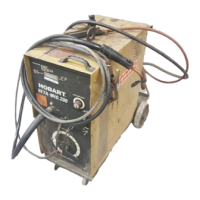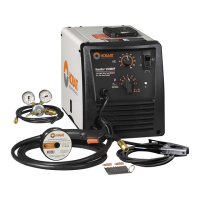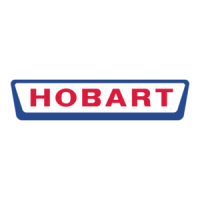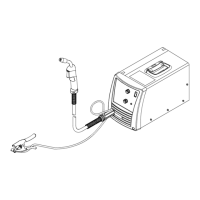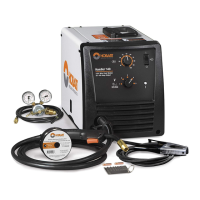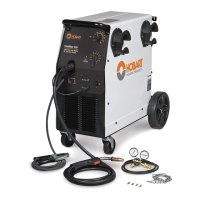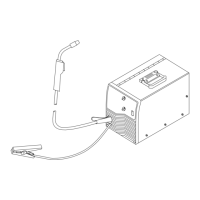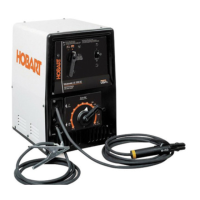OM-285922 Page 50
SECTION 10 − SELECTING AND PREPARING A TUNGSTEN
FOR DC OR AC WELDING WITH INVERTER MACHINES
gtaw_Inverter_2018-01
Whenever possible and practical, use DC weld output instead of AC weld output.
10-1. Selecting Tungsten Electrode (Wear Clean Gloves To Prevent Contamination Of Tungsten)
A. Select Tungsten Electrode.
. Not all tungsten electrode manufacturers use the same colors to identify tungsten type. Contact the tungsten electrode manufacturer or reference
the product packaging to identify the tungsten you are using.
Amperage Range - Gas Type♦ - Polarity
Electrode Diameter (DCEN) − Argon
Direct Current Electrode Negative
(For Use With Mild Or Stainless Steel)
AC − Argon
Unbalanced Wave
(For Use With Aluminum)
2% Ceriated, 1.5% Lanthanum, Or 2% Thorium Alloy Tungstens
.010 in. (.25 mm) Up to 15 Up to 15
.020 in. (.50 mm) 5-20 5-20
.040 in. (1 mm) 15-80 15-80
1/16 in. (1.6 mm) 70-150 70-150
3/32 in. (2.4 mm) 150-250 140-235
1/8 in. (3.2 mm) 250-400 225-325
5/32 in. (4.0 mm) 400-500 300-400
3/16 in (4.8 mm) 500-750 400-500
1/4 in. (6.4 mm) 750-1000 500-630
♦Typical argon shielding gas flow rates are 10 to 25 CFH (cubic feet per hour).
Figures listed are a guide and are a composite of recommendations from American Welding Society (AWS).
B. Electrode Composition.
Tungsten Type Application Notes
2% Cerium
(Grey*)
Good all−around tungsten for both AC and DC welding.
1.5−2% Lanthanum
(Yellow/Blue)
Excellent low amp starts for AC and DC welding.
2% Thorium
(Red)
Commonly used for DC welding, not ideal for AC.
Pure Tungsten
(Green)
Not Recommended for inverters!
For best results in most applications use a sharpened cerium or lanthanum electrode for AC and DC welding.
* Color may vary depending on manufacturer, please refer to manufacturer’s guide for color designation.
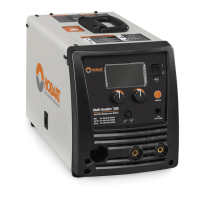
